While EV sales should end the year about 10% higher than 2023, the growth rate has slowed sharply. Several factors contributed to the slowdown, starting with the price premium — averaging about $10,000 more than comparable gas models. But Ford CEO Jim Farley claims the company is working up new EVs that will deliver “game-changing” prices, in line with rock-bottom Chinese brands. And a new study shows that plunging battery costs will play a major role.

Ford CEO Jim Farley at the F-150 Lightning launch. Farley says the company’s adapted to combat the expected wave of inexpensive EVs coming to the U.S.
While you’d have to head south of the border to find one in Mexico, products like the BYD Shark pickup threaten to change the game by delivering costs substantially below what we’ve seen manufacturers charge for EVs in the U.S.
With one industry official warning Chinese products could pose an “extinction level event,” traditional manufacturers are starting to panic. Earlier this year, Ford CEO Jim Farley even pulled the plug on some works in progress, including what was to be a premium-priced three-row SUV. Ford’s answer to its Chinese rivals will come from a new “skunkworks” set up in Long Beach, California. And Farley promises that project will deliver “game-changing” vehicles, slashing the price tag significantly when compared to the automaker’s earlier EVs.
The first example is expected to go into production in 2027, likely in the form of a midsize, all-electric pickup codenamed T3, to be assembled at Ford’s new BlueOval City assembly complex near Memphis, Tennessee. A variety of factors are expected to make it possible to slash the truck’s cost — but one thing stands out, according to several sources. And, according to a new study, it could mean “parity” between the price of EVs and gas models will come sooner than many had expected.
Battery prices set to tumble
Whether you’re buying today’s Ford F-150 Lighting pickup, the Chevrolet Equinox EV or the Volkswagen ID.Buzz microbus, batteries comprise the single largest cost of an all-electric vehicle. The typical EV uses anywhere from about 65 to as many as 200 kilowatt-hours of lithium cells. (These can be the longer-range, albeit more expensive lithium-ion, or shorter-range, but cheaper LFP cells.)
Of course, the price of battery cells is misleading. You also have to factor in the cost of the overall pack, which can add thousands of dollars to the cost. But, all in, the typical price worked out to about $145 per kWh as recently as 2023. But battery prices have fallen about 20% this year, reveals a new BloombergNEF study, taking the cost down to an average of $115. For a vehicle with a 100-kWh pack, fairly typical for those delivering 300 miles range, that translates into a cost reduction of nearly $3,000.
And that’s just the start. The price of battery cells and packs is expected to continue tumbling, the study anticipates. By 2026, they’ll have dropped so sharply — to around $100 per kWh, that manufacturers like Ford will reach price parity. In other words, it will cost no more to build an EV than a comparable gas model.
EVs will be the cheaper ride
By 2030, battery-powered models will be cheaper to build. The industry target had been to reach $75 per kWh by decade’s end. Bloomberg — and the industry sources it surveyed now see a cost target of just $69 per kWh. Compared even to today’s figure, that would save another $5,600 for a vehicle with 100 kilowatts of energy storage.
A variety of factors are expected to come into play:
- Improvements in manufacturing should simplify the production process and, significantly, reduce the defect and rejection rate of cells coming off the line;
- Updated designs are expected to increase the amount of energy that can be stored in an individual cell without a concurrent increase in cost;
- New battery technologies, such as solid-state, are widely expected to be on the market by 2030, reducing not only cost but size and weight of battery cells;
- Manufacturers are also learning how to stuff more cells into a given pack size, further reducing costs — while also making it possible to boost range.
But there’s another, significant issue at play: competition among battery manufacturers.
More EV News
- Auto Industry Central to Presidential Race
- UAW Invests Millions in Bid to Defeat Trump
- Musk Money in Hand, Trump is Now “For” EVs
Too many battery plants?
As recently as 2020, the U.S. and Canada had enough combined production capacity to produce about 20 gigawatt-hours worth of lithium-ion and LFP batteries, according to industry and government data. Currently, the forecast calls for that to reach a terawatt by 2030, a 5,000% increase.
China, however, is determined to remain dominant in the field — as it is currently. The study by Bloomberg found it already has capacity for 1.2 terawatt-hours of lithium-ion and LFP batteries — and that’s also expected to keep growing.
“This exerted downward pressure on battery prices,” reads the report’s summary. “Smaller manufacturers are being challenged by their larger peers, pressured to lower cell prices and cut margins for market share.”
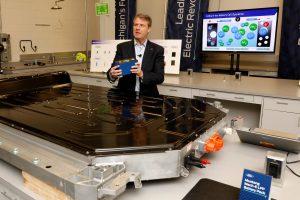
EV battery prices are falling faster than expected, which means price parity with ICE-powered vehicles arrives sooner.
Along with the race to dominate production of EV batteries there’s also the push to develop more sources for their raw materials, notably lithium, but also cobalt, nickel and manganese. China also has the lead here, though U.S. and Canadian deposits of those and other critical minerals are also being discovered and tapped into.
Cheaper EVs are fast arriving
Anyone who follows the EV market is bound to notice that prices are beginning to come down — in some cases quite sharply. Tesla kicked off a bit of a price war in 2023 and that has accelerated. In some cases, manufacturers are willing to take hits to their bottom line in order to boost sales and gain share. But they’re also passing along savings.
As Headlight.News reports today, Toyota is offering as much as a $6,000 discount on its slow-selling bZ4X. Ford has repeatedly cut prices on the F-150 Lightning and Mustang Mach-E.
Then there are new models coming in at substantially lower prices. The base version of the Chevrolet Equinox EV now starts at $33,600 before in delivery fees — even while delivering 319 miles per charge. Better yet, drops to as little as $26,100 for buyers who qualify for federal EV tax credits. And the reborn Chevy Bolt EV, due to return to market next year, is expected to start at or under $30,000, even before the federal incentives.
On the downside, we may see those credits dropped under the incoming Trump administration — and the next president’s proposed tariffs could further impact pricing on foreign-made EV. Meanwhile, some other countries have curbed their own givebacks as EV sales have reached more mainstream levels. But it seems all but certain that, on even a leveled playing field, EV costs are heading down fast. Within just a few years, the study suggests, electric vehicles, rather than gas models, will be the option of choice for budget-minded buyers.

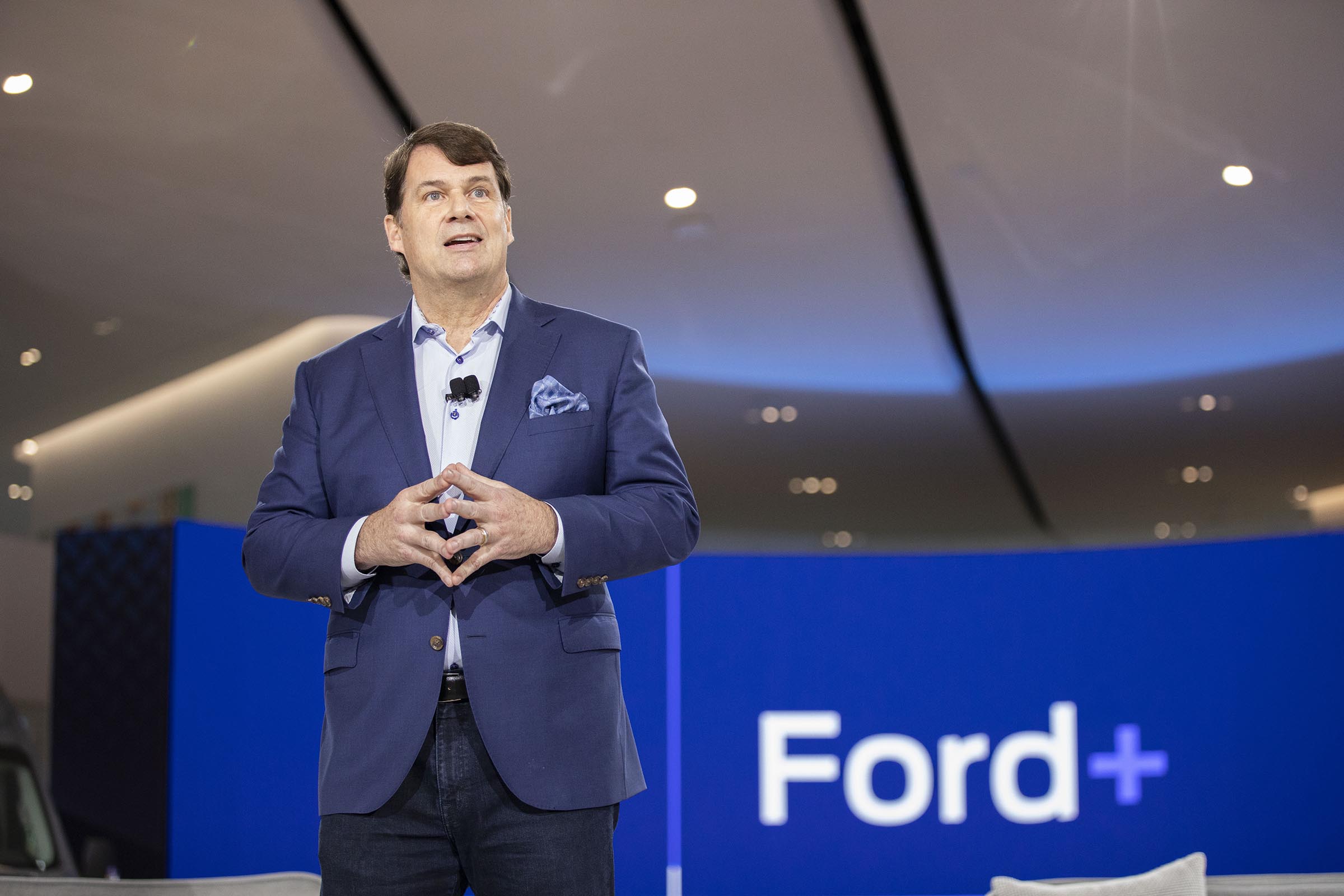
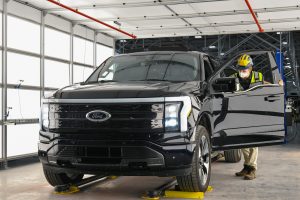
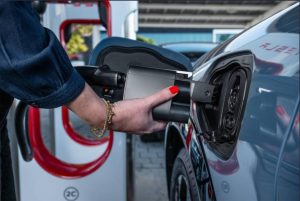
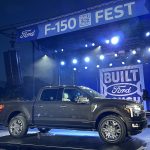


No matter how hard you push them, people just don’t want them. Now with winter coming, the cold temps just don’t favor EVs. I lose half my range in the winter months and it’s a pain.
Jim, I don’t know why you keep making statements you can’t back up. First, EV sales are up about 10% this year, making this the fastest-growing segment in the market. (And it would be even higher but for backlash against Tesla which isn’t growing much.) They are approaching 10% of the overall U.S. new vehicle market and nearly 25% in California. Sales are up solidly, even in Midwest and Southern regions. Overseas, demand is growing even faster.
I have an F-150 Lightning and understand about winter range losses. You do realize ICE vehicles lose a good 20-30% of fuel economy in comparable conditions? And they can’t be pre-heated without sucking down gas…we minimize range loss by preconditioning while still connected to the charger and this have a warm car with a full battery when we head out. Range loss dips measurably.
Paul E.